Hero Spotlight, Kindra Hixon
Follow ( 0 Followers ) X Follow E-mail : * Follow Unfollow
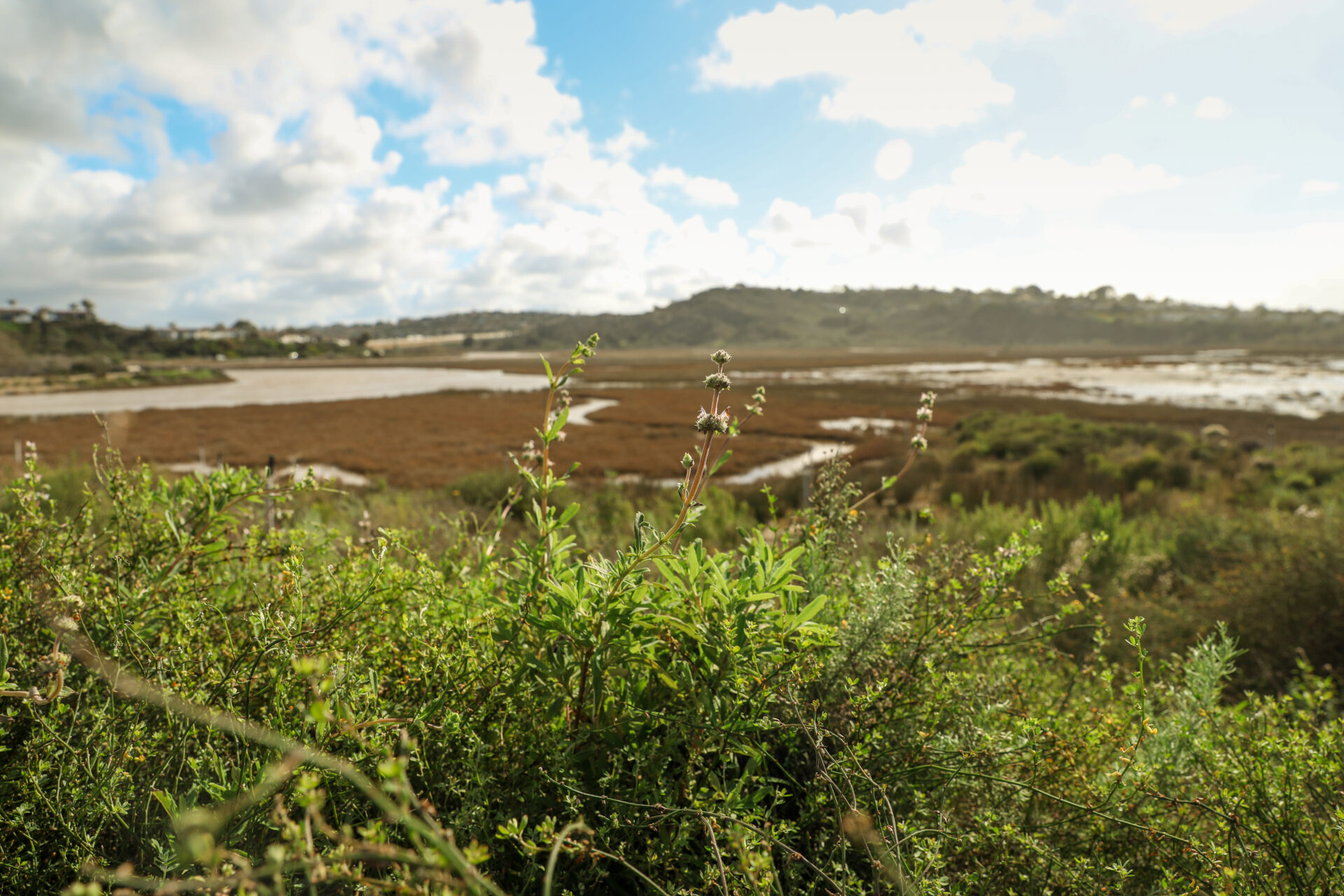
Nature Collective, which comanages the Reserve, monitors the oxygen, pH, temperature, turbidity, and chlorophyll of the Reserve channels daily. Unfortunately, the dissolved oxygen levels have dropped to 0% at the Nature Center Sondes station and 2 mg/l at the East Basin Sondes station—normal oxygen levels in the Reserve range from 3 to 7 mg/l. Anything lower than 3 mg/l is considered poor.
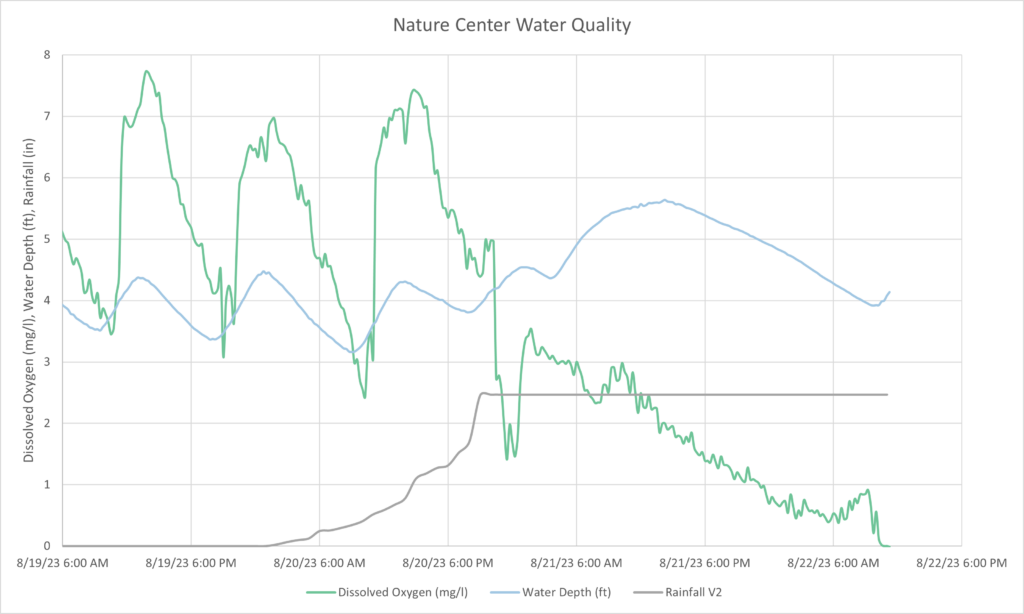
Above: Graph showing dissolved oxygen, water depth and rainfall.
The low oxygen levels are due to the large amounts of concentrated storm runoff after Tropical Storm Hilary brought heavy rainfall (2.5-3.5″) to the Escondido Creek Watershed. Storm runoff occurs when excess rainwater cannot infiltrate the soil quickly enough. Impervious surfaces, such as roofs and pavement, do not allow water to soak into the ground, so it runs off into storm drains and ditches, picking up pollutants such as fertilizer, oil, pesticides, dirt, bacteria, and other debris. This polluted runoff is then carried untreated into creeks, lakes, lagoons and the ocean.
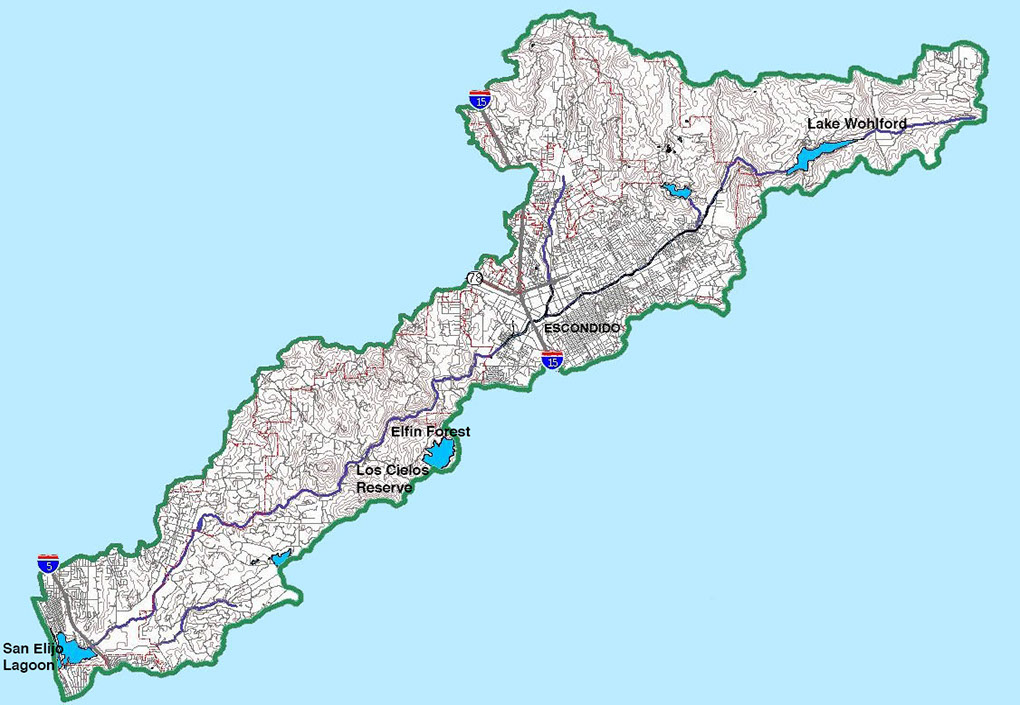
Above: Escondido Creek Watershed (Credit: Ruth Wallen)
In this occurrence, the storm runoff carried pollutants that have been accumulating in the watershed since the last significant rainfall in March. The tropical storm winds also blew tremendous dust and debris into the channels, and a neap tide further contributed to the poor water quality.
The combination of these factors has caused the dissolved oxygen levels in the Reserve to drop to dangerously low levels, resulting in a localized fish die-off.
The Reserve is expected to continue receiving runoff for up to 72 hours after the storm event. The next tide that is expected to bring more tidal circulation will occur on Friday. The next few days will be very challenging for the marine life in the reserve.
San Elijo Lagoon isn’t alone in this. Other organizations with live water quality data available, like Los Peñasquitos Lagoon and Tijuana River Estuary, also report low water quality levels due to the tropical storm.
This fish die-off is a reminder of the importance of reducing storm runoff. There are many things that we can do to reduce runoff, such as planting trees, grasses, and other vegetation, using rain barrels to collect rainwater for reuse, installing permeable pavement that allows rainwater to soak into the ground, and disconnecting downspouts from storm drains and redirecting them to vegetated areas.
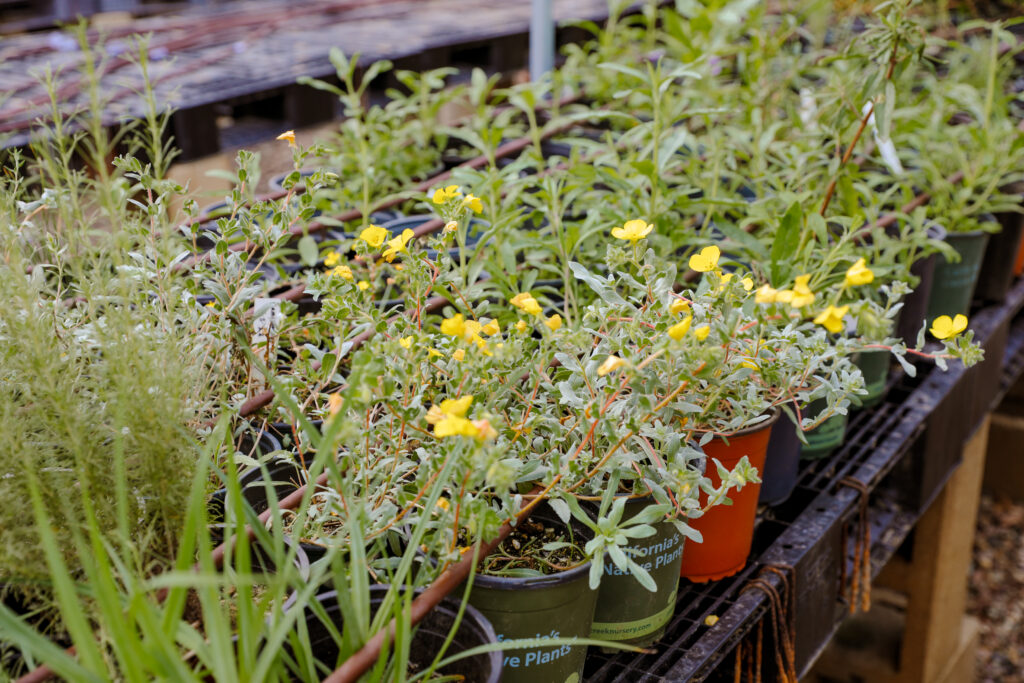
Above: Native Plants at Pilot Nursery at San Elijo Lagoon
By reducing storm runoff, we can help to prevent water pollution, reduce flooding, protect our drinking water resources, and create healthier habitats for fish and other wildlife.
Nature Collective is working to determine the best management practices and actions to prevent future fish die-offs.
The storm also closed parts of the Nature Center Loop Trail, the La Orilla and Annie’s Canyon Trail. We are grateful for the support of our Reserve comanagers, San Diego Parks and Recreation Nature Center Rangers, who are working hard to repair the trails damaged by the storm.
If you would like to help support Nature Collective’s work, please consider donating. Your donation will help the organization to continue its essential work of protecting San Elijo Lagoon and its surrounding watershed.
Update: As of August 27, 2023, the lagoon channels are back to normal dissolved oxygen levels for this time of the year. With the neap tide ending, the rising high tides on Friday, Saturday, and Sunday brought high dissolved oxygen into the lagoon, diluting and draining out the low dissolved oxygen stormwater stuck in the lagoon.
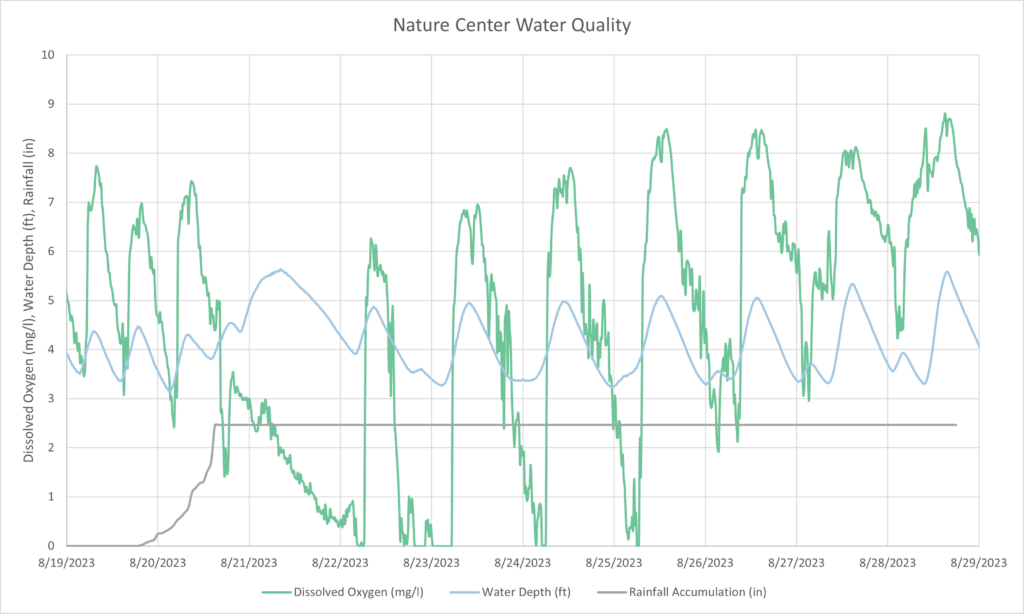
Above: Updated graph showing dissolved oxygen, water depth and rainfall after the neap tide.